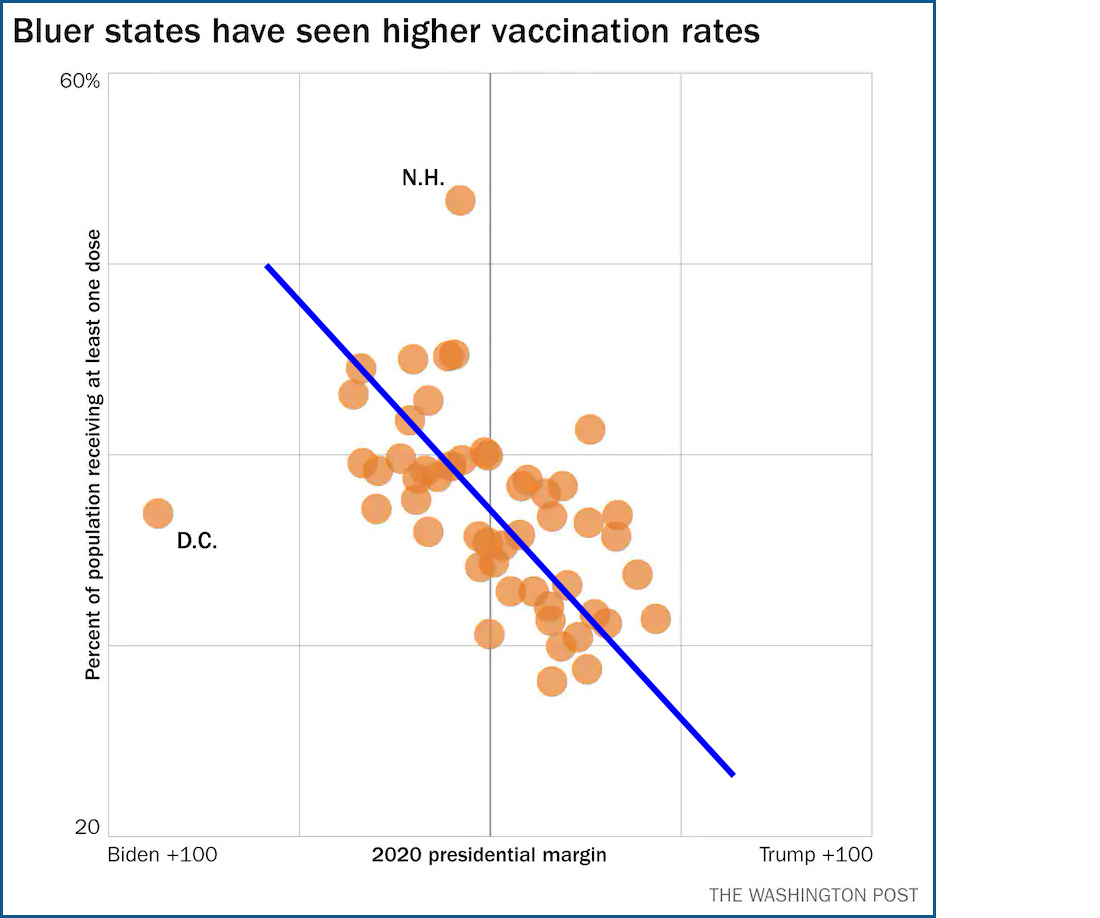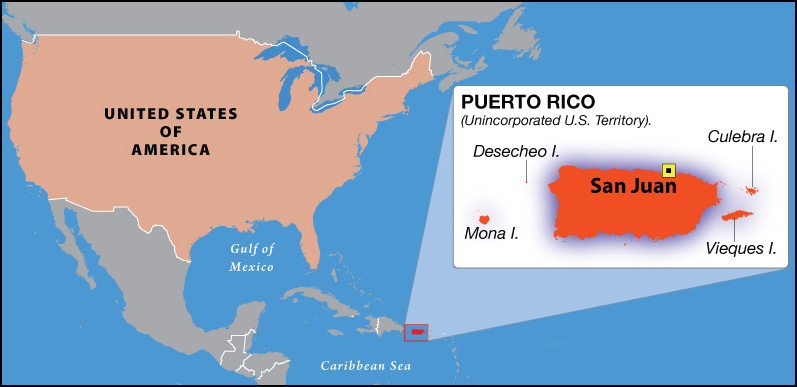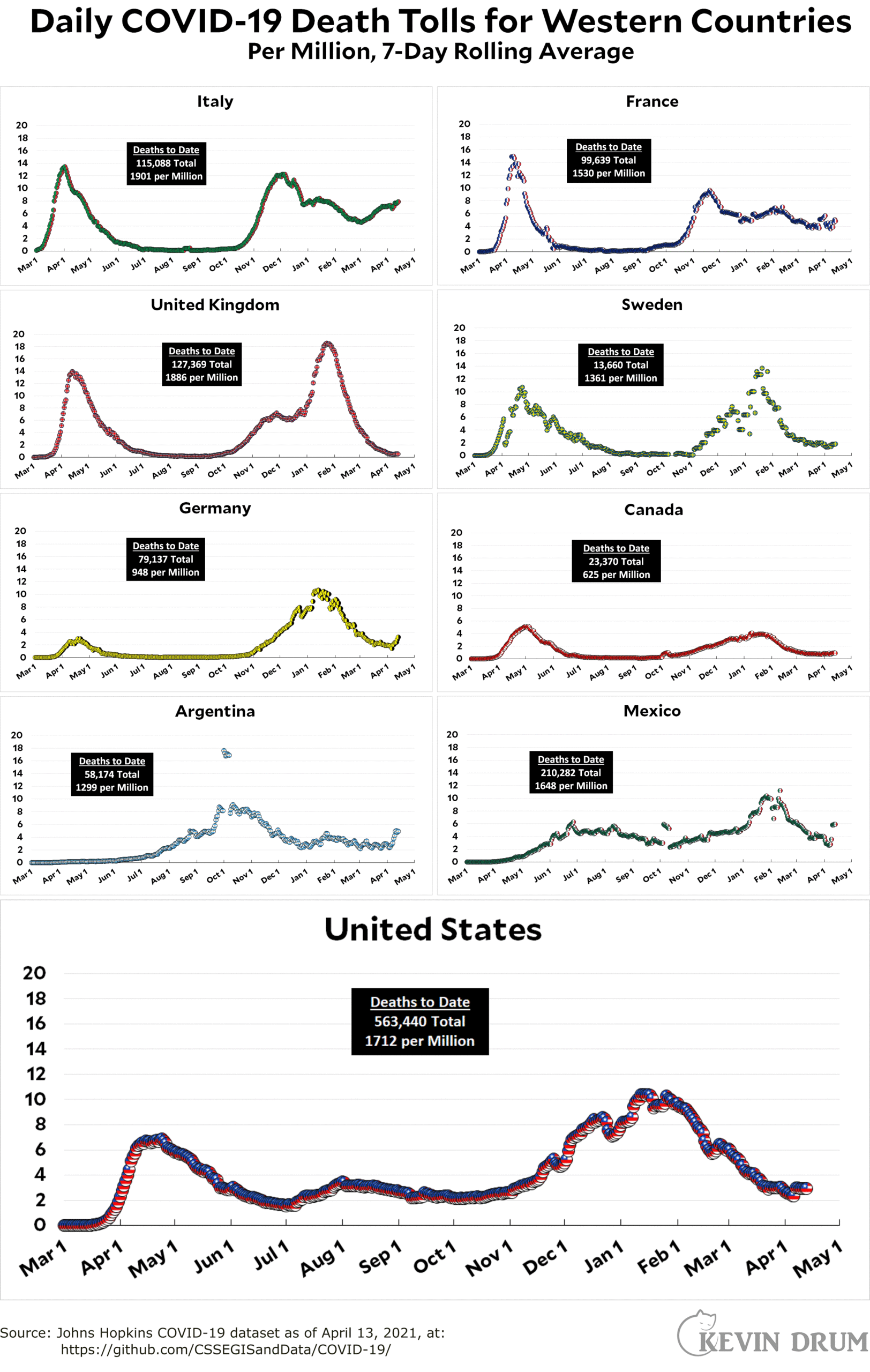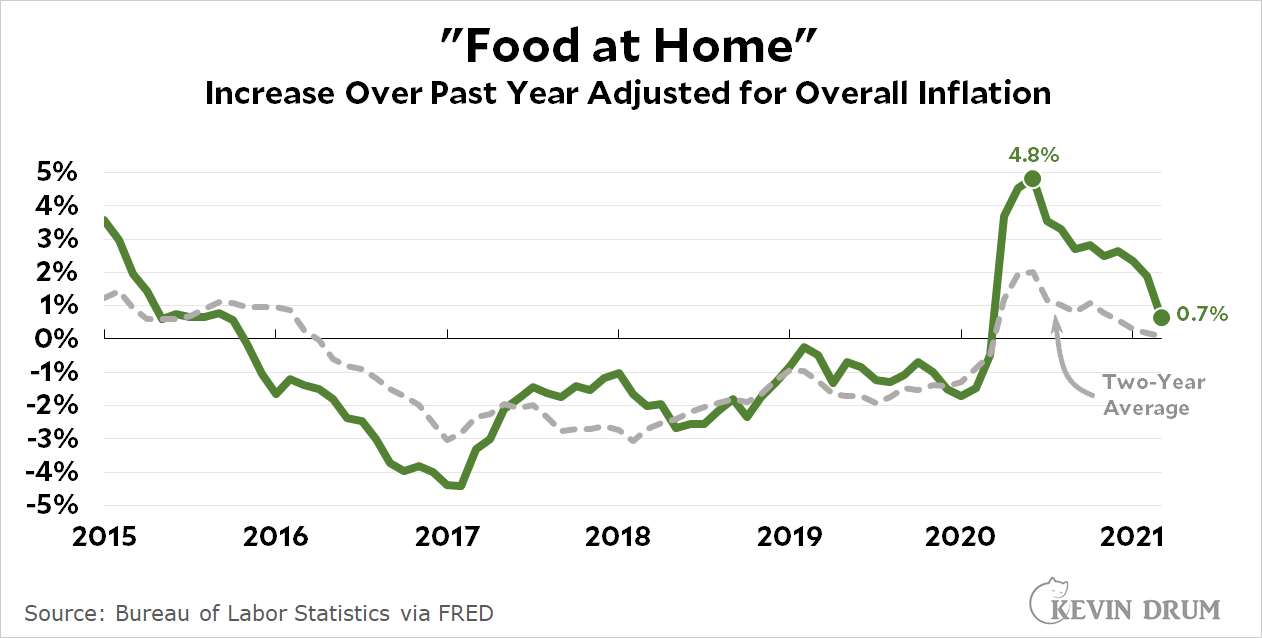Last week I had lunch with my friend DF and the conversation turned to the general subject of the CDC. Stripped to its basics, the question was: Are they idiots? Or are they just doing their best to follow the science at a time when the science is evolving quickly?
The specific subject we chose as a test case was the CDC's advice about disinfecting surfaces in March 2020. I agreed to look into this, which turns out to be a little tricky. I need to go back in time and figure out (a) what the CDC's advice was at the time, and (b) what the best science said at the time.
So here we go. As near as I can tell, the CDC's advice in early March was pretty straightforward: You should clean high-touch surfaces daily, but the risk of catching COVID-19 from surface contact is very low. Here's a typical media report from March 12:
Coronavirus mostly spreads from person to person within about six feet, according to the CDC.
The CDC said it hasn’t seen transmission of this virus from surfaces to people....The CDC said the best thing to do is clean visibly dirty surfaces in your home and then disinfect them.
The problem is that a few days later a study was released that said the coronavirus was stable on some surfaces for quite a long time:
The scientists found that severe acute respiratory syndrome coronavirus 2 (SARS-CoV-2) was detectable in aerosols for up to three hours, up to four hours on copper, up to 24 hours on cardboard and up to two to three days on plastic and stainless steel.
This did not change the CDC's advice, but it did get a huge amount of media attention. People started fretting about disinfecting every surface they touched, leaving groceries in the garage for several hours after you brought them home, and quarantining mail for days. But here's Dr. Fauci in mid-March at a CNN town hall:
I think if you start thinking about money and mail and things like that, you can almost sort of immobilize yourself, which I don’t think is a good idea.
And here he is in late March:
“I don’t think we need to get completely obsessed about packages that come in because those types of surfaces — the virus might live there for a very short time," Fauci explained. “But people say ‘Should I get a package from a grocery store that says made in China?’ I wouldn’t worry about that. That’s not the issue.”
The CDC itself was pretty consistent throughout all of this: There was little danger of contracting COVID-19 from groceries or packages or from food. You should clean things like doorknobs frequently, but that's probably enough. Mainly, you should practice social distancing and wear a mask. Much of this got drowned out by media coverage of the coronavirus surviving for days on common surfaces, but you can't blame that on the CDC. They pushed back on that and maintained their more moderate advice.
But there's one more thing. DF was especially dismayed by the closure of outdoor playgrounds even though there was evidence that sunlight kills the coronavirus very quickly. And that's true. Here's a media report from late April:
"Our most striking observation to date is the powerful effect that solar light appears to have on killing the virus, both surfaces and in the air," he said.
....The virus's half-life—the time taken for it to reduce to half its amount—was 18 hours when the temperature was 70 to 75 degrees Fahrenheit (21 to 24 degrees Celsius) with 20 percent humidity on a non-porous surface.... In the presence of sunlight, this dropped to just one and a half minutes.
But there was also this:
Half the virus may be killed in as little as two minutes if it’s on a surface exposed to sunlight and high humidity at room temperature.... Under drier, shady conditions, the virus’s half-life is far greater — around 18 hours.
And this:
“It doesn’t make it safe to go out to the beach because the time it takes for the sun to kill the virus is exceptionally long,” Armani said.
A coronavirus’ outer layer weakens as the temperature rises, Armani said....But the sun won’t make much difference in spots where shade or clouds reduce the optical intensity of sunlight. Nor will sunshine prevent the virus from spreading from person to person through droplets of saliva or mucus in the air.
Karin Michels, chair of the epidemiology department at UCLA’s Fielding School of Public Health, said there was “no good data” to support the idea that the UV in sunlight would make any difference in the coronavirus infection rate.
In any case, I couldn't find any evidence that the CDC said anything about playgrounds one way or another. The National Recreation and Park Association advised closing playgrounds, and many local communities followed that advice. Most experts quoted in the media advised the same thing, partly because surfaces could retain the virus but mainly because kids are kids and are unlikely to maintain six-foot distances all the time. So yes, this became common advice, but it had nothing to do with the CDC.
This is all tentative since my trip back in time might have missed some important statements. And it's certainly true that, in general, the CDC tends to be very conservative in its advice and is slow to change it in the face of new evidence. You may decide for yourself whether that's good or bad.
That said, my tentative conclusion is that the CDC did a perfectly decent job on the subject of surface infections. The problem is that there were lots of other voices too, and it wasn't always clear to everyone what advice was coming from who. That's led to unfair recollections like this one in the New York Times last week:
When the coronavirus began to spread in the United States last spring, many experts warned of the danger posed by surfaces. Researchers reported that the virus could survive for days on plastic or stainless steel, and the Centers for Disease Control and Prevention advised that if someone touched one of these contaminated surfaces — and then touched their eyes, nose or mouth — they could become infected.
Americans responded in kind, wiping down groceries, quarantining mail and clearing drugstore shelves of Clorox wipes.
That's just not right. The CDC, I think, was pretty clear that you could become contaminated from these surfaces (which was true) but that it was pretty unlikely. When Americans went crazy for disinfecting their houses, it was because of advice from other media talking heads, not the CDC.
Other views are welcome. Let me know if you have media reports from last year that show the CDC providing different advice about the risk of getting COVID-19 from surface infections.






